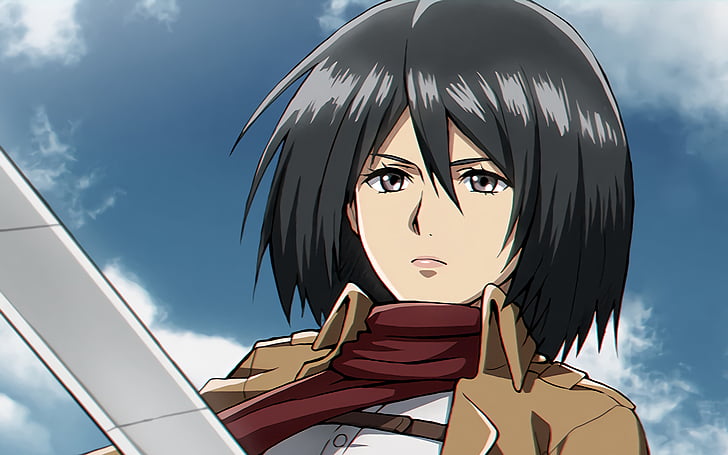Introduction
“Attack on Titan” isn’t just an anime. It’s a cultural phenomenon, a psychological thriller, and possibly the only show that makes viewers say, “Well, that escalated quickly,” every five minutes. Behind its explosive action and towering monsters lies a complex tale of war, trauma, betrayal, and the human condition. In a world where massive humanoid creatures devour humans on sight, the real horror isn’t just the Titans—it’s the truth hiding behind the walls.
So let’s unpack this juggernaut of a series—without ruining your appetite.
The World of Walls and Secrets
The story begins in a world where humanity has been driven to the brink of extinction. The last remnants of civilization hide behind three concentric walls: Wall Maria, Wall Rose, and Wall Sheena. These aren’t just barriers—they’re lifelines, keeping Titans out and fragile peace in.
For over a century, the people inside the walls believed they were the last humans alive, living in relative safety… until the Colossal Titan kicks down the door—literally—and reignites a century of fear and bloodshed. What follows is a desperate scramble for survival, led by characters who have no idea how deep the rabbit hole goes.
Meet the Main Cast: Friends, Fighters, and Fated Enemies

At the heart of the chaos is Eren Yeager, a boy whose tragic loss during the Titan attack turns him into a revenge-fueled soldier. He’s joined by:

Mikasa Ackerman, the quiet powerhouse with a soft spot for Eren and a deadly set of skills.

Armin Arlert, the strategic mind of the trio, proving brains can be as vital as brawn.
Together, they join the Survey Corps, an elite military unit tasked with venturing outside the walls to uncover the truth and fight Titans head-on. But the more they learn, the less they understand. Because the Titans aren’t just monsters—they’re part of a much more sinister design.
What Makes the Titans Terrifying
At first glance, Titans are horrifying because they’re huge, fast, and hungry. But as the series progresses, they become symbolic. Some are mindless. Some can think. And some—spoiler-free—used to be human.
That’s when things get complicated.
You start to wonder: who’s the real enemy? The Titans? The people controlling them? Or the systems that forced everyone into this fight in the first place?
Themes That Hit Harder Than a Titan Punch
“Attack on Titan” excels because it balances action with deeper themes:
- Freedom vs. Safety: Are the walls protecting people, or imprisoning them?
- Cycles of Violence: Is revenge ever justified, or does it just create more tragedy?
- The Nature of Power: What happens when good people gain terrible power?
Every character is forced to face these questions. And they don’t all choose the same answers.
No One Is Safe. Nothing Is Simple.
One of the show’s most famous traits is its willingness to kill off characters. Main characters. Fan favorites. Mentors. Villains. Heroes. No one is safe.
But the deaths aren’t for shock value alone—they shape the story. Each loss serves as a turning point, pushing survivors into new, often morally gray territory. You’re not just watching a story—you’re watching people grow, break, and rebuild in the most desperate circumstances.
The Plot Twists: From Horror to Political Thriller
Just when you think “Attack on Titan” is about humans fighting monsters, it flips the script. Suddenly, you’re dealing with:
- Espionage
- Political corruption
- Generational trauma
- Global warfare
It’s not just Titans anymore—it’s ideologies, nations, and generations clashing. And yes, by the time you reach the final seasons, it’s less “kill the monsters” and more “what even is morality anymore?”
The Final Season: War, Ideals, and Consequences
The final arc is where everything comes together… and falls apart.
With the truth of the Titans revealed, the focus shifts to the outside world—and the horrors it contains. Eren takes a path no one saw coming. Old allies become enemies. Enemies become allies. Ideals clash with reality in a way that forces both characters and viewers to confront uncomfortable truths.
The final season challenges viewers to ask: What would you do to protect your people? Is peace possible without sacrifice? Can the cycle of hatred ever be broken?
A Story That Stays With You
Whether you love or hate how the story ends, “Attack on Titan” leaves a lasting impact. It’s a masterclass in worldbuilding, pacing, and narrative risk. It redefined what shonen anime could be—less about flashy power-ups and more about consequence, ethics, and survival.
It’s also the rare anime where watching a man scream for 3 minutes straight can be considered peak cinema.
Should You Watch It?
Absolutely—if you can handle:
- Intense violence
- Complex storytelling
- Unpredictable plot twists
- Characters that break your heart and your brain
It’s not light viewing, but it’s rewarding. “Attack on Titan” challenges its audience to think, feel, and question everything.
Conclusion: Humanity’s Last Stand, Or Just the Beginning?
“Attack on Titan” begins with one boy’s revenge and ends with an entire world hanging in the balance. It’s brutal, brilliant, and unforgettable.
In the end, it’s not just about fighting Titans. It’s about confronting fear, facing truth, and defining what it means to be human—even when the odds are stacked against you.
